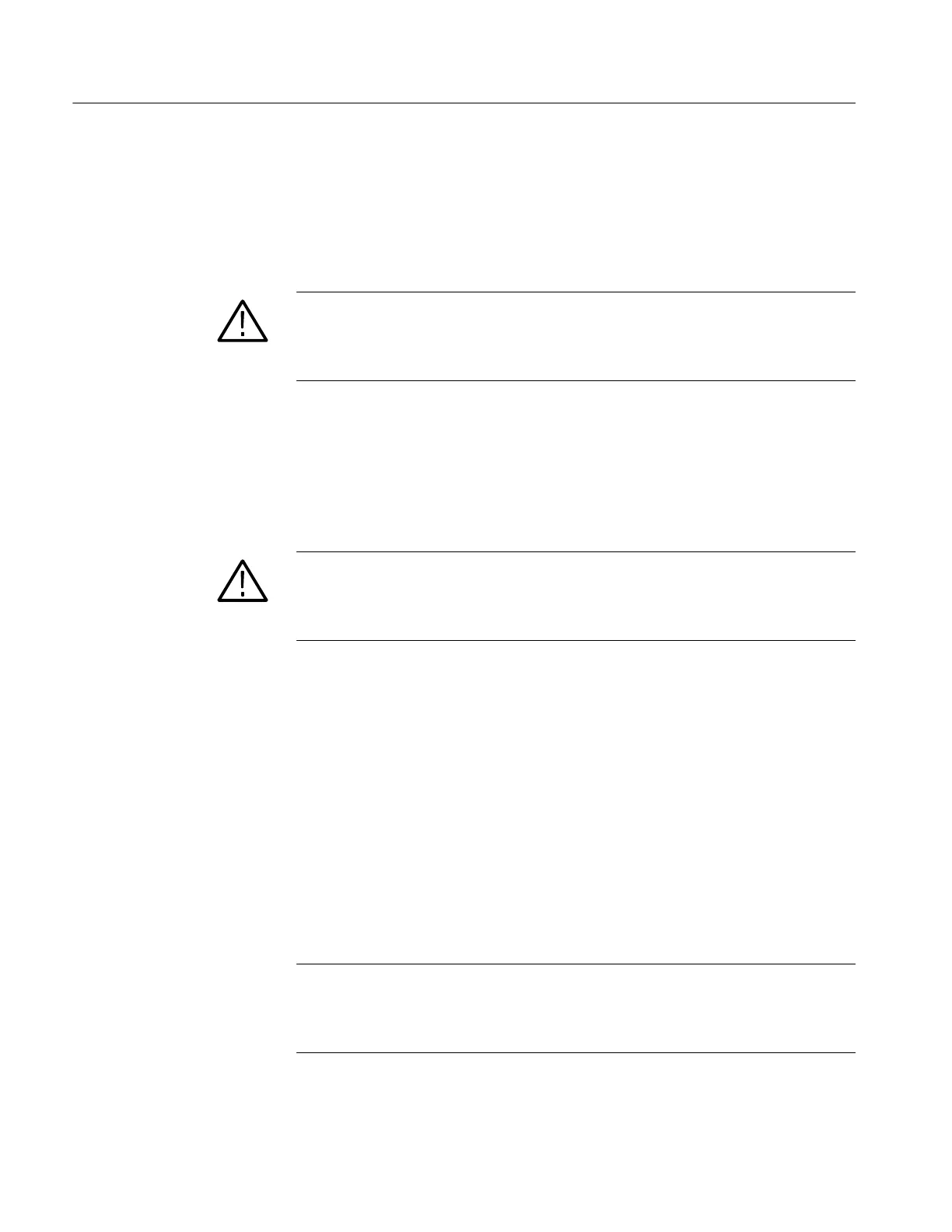Reference Notes
3-8
TCPA300/400 Amplifiers and TCP300/400 Series Current Probes Instruction Manual
Extending Current Range
You may encounter situations where your measurement exceeds the maximum
current rating of the connected probe. This section discusses methods for
extending AC and DC current ranges without exceeding specified limits.
WARNING. To avoid personal injury or equipment damage, do not exceed the
specified electrical limits of the TCPA300 and TCPA400 or any applicable
accessories. When using multiple conductors, do not exceed current limits on
either conductor.
If you want to measure a low-amplitude AC component that is superimposed on
an extremely large steady s tate DC component (such as in a power supply), or if
you want to extend the DC current range of your probe, you can add offset
(bucking) current with a second conductor.
WARNING. Do not put more than one uninsulated conductor at a time in the
probe jaws. An uninsulated conductor is defined as any conductor without
insulation or without insulation rated for the voltage present on the conductor
under test.
To supply additional bucking current, place a second conductor that has a pure
DC component of known value in the probe jaw with the conductor under test, as
shown in Figure 3--5(a). Orient the second conductor so that the bucking current
flows in the opposite direction of the DC flow in the conductor under test.
You can increase the value of the bucking current by winding multiple turns of
the second conductor around the probe, as shown in F igure 3--5(b). The bucking
current is equal to the current flowing in the conductor, multiplied by the number
of turns w ound around the probe. For example, if the second conductor has a
current of 100 mA DC and is wrapped around the probe five times, the DC
bucking current is 100 mA multiplied by 5, or 500 mA DC .
To determine measurement values, add the value of the bucking current to the
displayed measurement.
NOTE. Adding a second conductor to the probe increases the insertion imped-
ance and reduces the upper bandwidth limit of the probe. Winding multiple turns
further increases the insertion impedance, further reducing the upper bandwidth
limit.
Extending DC R ange
